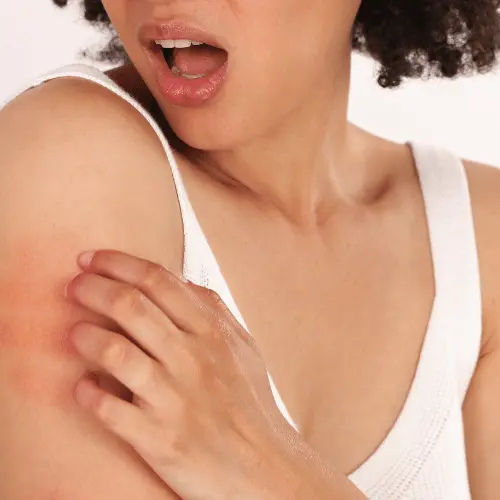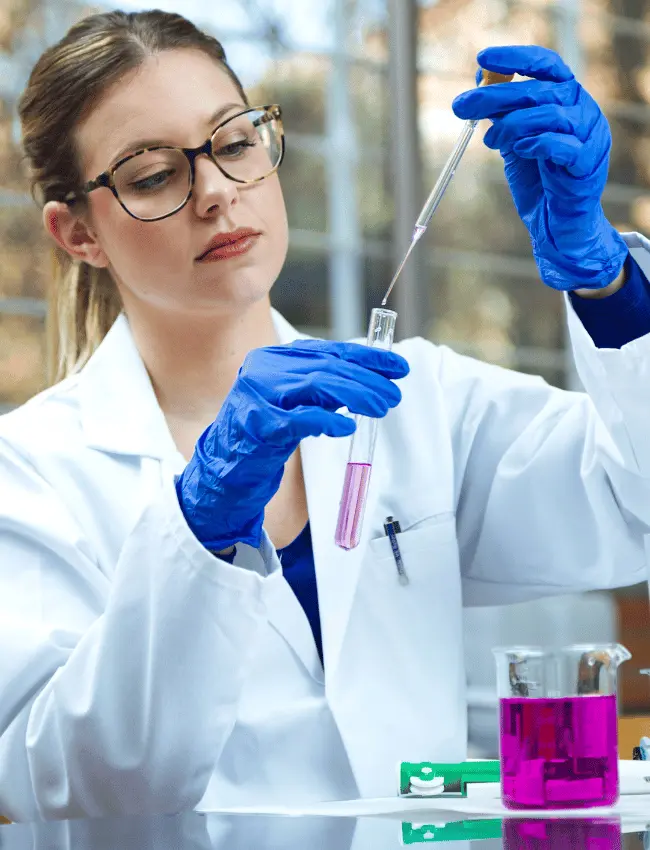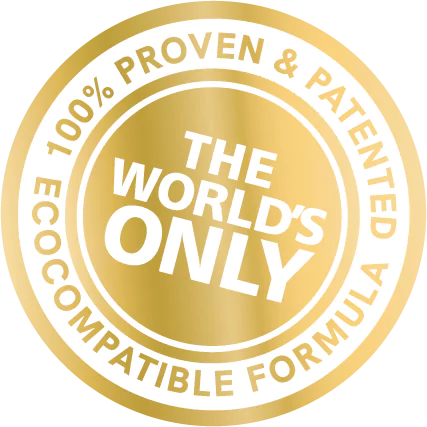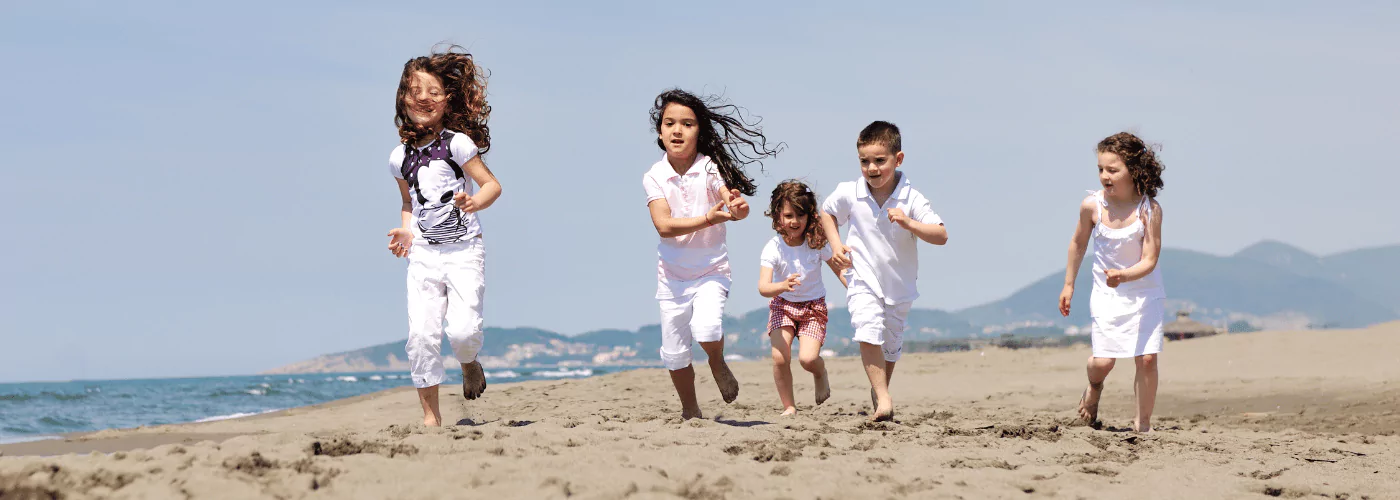An estimated 14,000 tons of sunscreen annually pollutes our oceans and waterways, and studies now show the harming effects to marine life. In a sea of conflicting information, our mission is straightforward: to uncover the unfiltered truth behind reef safe sunscreen. As traditional sunscreens and reef-unsafe sunscreens pollute with impunity, our delicate coral ecosystems silently bear the impact.
Aethic has been collaborating with Professor Danovaro, a leading marine scientist. He brings a valuable scientific perspective to research into the effects of harmful chemicals present in conventional sunscreens on coral reefs and marine life. Our commitment to scientific integrity is underscored by this collaboration, as we strive to neutrally examine the intricate issues surrounding coral health, DNA interference, and reproductive disruptions caused by these chemicals. We aim to provide you with a comprehensive understanding of the impact of sunscreens on coral reefs, ensuring that our exploration is grounded in credible research and expertise.

We’re diving into the nitty-gritty of what’s really in those sunscreen bottles and why it matters. Ever wondered about the impact of your sunscreen on coral reefs? It’s time to spill the beans on the good, the bad, and the coral-friendly. It’s a reality check about safeguarding not just your skin but the very future of our planet. Because the takes go beyond personal care – they extend to the survival of our oceans.
It’s time to be aware, informed, and prepared for what lies ahead. The fate of our planet is in our hands, and the journey begins with understanding the impact of seemingly innocent choices like sunscreen.
In recent years, the environmental impact of conventional sunscreens on delicate coral reefs has emerged as a pressing concern, urging us to think carefully about our choices.
The detrimental effects mainly arise from the presence of specific chemicals within non reef safe sunscreen that, upon contact with coral ecosystems, trigger the phenomenon known as coral bleaching. Rigorous scientific studies have shown that common ingredients such as oxybenzone and octinoxate, prevalent in mainstream sunscreens, significantly contribute to this ecological crisis.
These chemicals disturb the symbiotic relationship between corals and their photosynthetic microalgae, leading to the ejection of these vital algae and rendering the coral vulnerable to disease and mortality.
The urgency to transition towards proven reef safe sunscreen alternatives becomes increasingly apparent, as the widespread use of conventional sunscreens dramatically increases the vulnerability of already threatened marine ecosystems.
As thoughtful stewards of our planet, it is imperative to recognize the pivotal role each individual plays in mitigating this environmental crisis by opting for solutions that safeguard not only our skin but also the delicate balance of our oceans.

The key players in sunscreen are the compounds, listed as active ingredients. These sun filters shield our skin from the sun’s rays. Sunscreens’ active ingredients comprise 10-30% of the product. Sunscreens use a mixture of filters (different molecules) because each sun filter offers different protection across the range of UV wavelengths. Currently, 16 sun-filtering ingredients are approved by the FDA which considers sunscreens as drugs. Yet the FDA has yet got around to approving the latest generation of European sun filters and sunscreen makers in the US use only 8 regularly: avobenzone, homosalate, octinoxate, octisalate, octocrylene, oxybenzone, titanium dioxide, and zinc oxide. In Europe, Australia, and Japan, where sunscreens are classified as cosmetics, other compounds have also been approved for use and several of these are considerably more effective than their U.S. counterparts in protecting against UVA rays.
The sun emits two types of ultraviolet (UV) rays that require protection: UVA and UVB.
UVA rays, with longer wavelengths, penetrate deeper into the skin, reaching the dermis ( The inner layer of the two main layers of the skin.) They contribute to tanning, wrinkles, and are associated with skin aging, They can cause DNA damage, linked to skin cancer. They make up the majority (90%) of UV radiation reaching Earth’s surface. So think of UVA as UVAging.



UVB rays, has shorter wavelengths, and primarily affect the outer skin layer. They are responsible for sunburn and DNA damage, playing a more significant role in causing skin cancers. However, they only constitute 10% of UV radiation reaching the ground. Think of UVB as UVBurning.
The active ingredients in sunscreens protect our skin by either absorbing or reflecting UV light.




In the world of reef safe sunscreen, the big misnomer is the move toward natural and eco-friendly formulas. With the rising demand for sustainable products, the beauty industry has changed its tune allowing consumers to infer that natural is, well, naturally better. The inclusion of botanical ingredients, allegedly straight from nature, are increasingly prevalent and touted as reef-safe, or friendly, yet all of this is frankly meaningless without proof.
When a sunscreen carries a label “biodegradable”, it does not mean it is reef safe or non-toxic.Just because ingredients degrade, dissolve and disperse, it doesn’t at all guarantee that they will do no harm. It’s molecular compatibility that really counts.
This is what magicians call misdirection. “Look over here”.
In 2016, around 5 million kg of each Titanium Dioxide and Zinc Oxide mineral sun filters were used.
All of these sun filters (the active ingredients doing the protective work) are not harvested or mined straight from nature as these names suggest but instead man-made in the same factories as ‘chemical sun filters’. They’re all ‘chemical’ too in fact but then again, so are you. So while Zinc Oxide and Titanium Dioxide do occur in nature, the ones in Organic/Mineral/Natural formulations, are factory-made and often coated, or very small and according to this study react with sunlight to create hydrogen peroxide, thereby damaging phytoplankton. Alongside coral and seagrass, phytoplankton is another huge pillar of marine life and also an enormous carbon sink. So right there, mineral sun filters are not exactly the winners which their names are used to suggest.
Nano particles are extremely tiny particles with dimensions measured on the nanometer scale, typically ranging from 1 to 100 nanometers. To put it into perspective, a nanometer is one billionth of a meter. These particles can be found in various materials and products, including sunscreens. In the context of sunscreen, nano particles are used to create formulations with a smoother and more transparent texture when applied to the skin. This is particularly relevant to mineral sun filters.
Indeed, nano-sized particles of zinc oxide or titanium dioxide are often employed. These particles are so small that they become nearly transparent, avoiding the white cast associated with larger particles of these minerals. The advantage of nano-sized particles in sunscreen lies in their ability to provide effective UV protection without leaving a visible residue on the skin. However…
There has been concern about the environmental impact of nano particles, especially in marine ecosystems. The first study indicating sunscreen causes bleaching in corals was published in 2008. Corals were taken from the environment and exposed to several store-bought sunscreen lotions in seawater tanks. The purpose of this initial study was to simply determine if sunscreen at high concentrations caused corals to bleach, also called a toxicity study. All corals tested bleached. In response to these concerns, some so-called reef-safe sunscreens utilise non-nano particles to provide UV protection without the potential environmental drawbacks of nano-sized ingredients. Yet, even that does not necessarily hang together.
Building on previous studies, research continues to highlight potential harm from certain sun filters to corals and marine life. Specifically, oxybenzone and octinoxate raise concerns due to their detrimental effects on coral health. Notably, octinoxate breaks down into benzophenone, a known carcinogen and hormone disruptor, further amplifying concerns.
In the wild west of eco-friendly beauty, reef-safe sunscreens lack the definitive certifications and clear regulations that guide other industries. The certifications that do exist are commercial businesses whose interest is, you guessed it, in certifying as many products as possible. This vacuum empowers brands to make bold claims with minimal accountability, leaving consumers lost in a sea of uncertainty about the true green credentials of these products. Without standardised guidelines, or better still, legislation, navigating this unregulated terrain requires immense caution and scientific knowledge which few consumers, if any, could possibly be expected to have!
Across borders, sunscreen human safety standards diverge significantly due to varying regulations and testing procedures. Europe has tended to act faster in banning ingredients that have proved to be harmful to humans.
When it comes to the marine impact of ingredients, there are no standards whatever! It is for this reason that Aethic’s proof is so important. Because each ingredient in the formula is one that was passed as safe from a screening of many more. And then the final formula was tested in its entirety and passed safe. The evidence is in the patent. Subsequent tests on clams and sea urchins reconfirmed the coral findings; this formula is Eco compatible.
Aethic has the world’s ONLY proven and patented reef safe formula.

Ingredients must first provide skin with photo-stable UVA/UVB protection and should be compatible with people as well as marine life. Only testing of the entire formula can verify this.
We had a full range of ingredients tested on coral. The harmful ones were then excluded and a finished product was formulated with the harmless ingredients and tested on coral once more. Intact. We also had the finished product tested on sea urchins and clams. It left these intact too.
The testing was done by the same scientists who first discovered the problem sunscreens posed to coral and published their seminal study in 2008.
Achieving uniform global regulations is a complex task, but industry leadership can ignite positive change.
With this in mind, AETHIC HAS DEVELOPED ITS OWN PRODUCTS, and makes a positive change. Our sunscreens proudly carry a golden seal bearing the words: THE WORLD’S ONLY PROVEN AND PATENTED ECOCOMPATIBLE FORMULA. Because it is.
Choosing a truly, proven, reef safe sunscreen is not just about protecting the environment; it’s also about protecting your health. Some of the chemicals found in conventional sunscreens have been linked to hormone disruption and other health concerns. Childrens’ skins are very sensitive and need high protection.
By making the switch to Aethic’s reef safe sunscreen, you can be sure that you are protecting both yourself and the planet.

Here are some additional benefits of using Aethic reef-safe sunscreen:
The growing popularity of reef safe sunscreen often comes with a cloud of misinformation and misconceptions. Sorting through these can be confusing, making it difficult to know what choices truly benefit both your skin and the environment. Let’s debunk some common myths and clarify facts, drawing evidence from scientific research.
Fact: Not true. It is not black and white. Some are extremely harmful, others less so and one in particular, Aethic’s, is entirely harmless. And it’s not only the active ingredients which do the harm, even some essential oils can do inflict harm on coral. And some Vitamins can. And preservatives, emulsifiers and so on. The entire finished formula needs to be tested.
Fact: A Tricky one. It is true that many mineral sunscreens leave a white cast. By making the particle size smaller (i.e milling the mineral to be finer in texture) this can be avoided but then, and here comes the sting in the tail, they are more likely to cause harm to marine life.
Fact: Beware of greenwashing! Not all natural ingredients are automatically reef safe. Some botanical extracts, like certain essential oils, can harm marine life. The list could be endless and scanning the ingredients list may help you spot some bad ingredients that have become media stars but it won’t tell you the entire story, regardless of marketing claims. We’ve explained this above. Ask for proof that the entire formula left coral unharmed. Nothing else matters.
Fact: This myth has been scientifically debunked. Studies published in the Journal of the American Academy of Dermatology (2018) and Marine Pollution Bulletin (2019) found no significant difference in effectiveness between reef safe and conventional sunscreens when applied correctly. Of course, that’s partly because they are often the same formulations anyway, just with newly added ‘reef safe’ claims on the pack!
Fact: While the market offers various reef safe sunscreen options, premium formulas stand out for their commitment to cutting-edge research, rigorous testing, and advanced ingredients. These sunscreens often go beyond just sun protection, offering additional benefits like enhanced water resistance, anti-aging properties, and luxurious textures. While carrying a higher price tag, they cater to consumers seeking the ultimate in sun protection, performance, and pampering as well as protecting the environment.
We respect everyone who wants to protect themselves well and also not harm the ocean. It’s what we have to do and we wish we could say that there are many credible options…. So, all we can suggest is that you demand proof you can believe in. It’s entirely your good right. Every drop of bad sunscreen that is replaced with a truly reef safe alternative, is a big win. Take a leap for the ocean.
Here’s a list of the most harmful ingredients in mainstream sunscreens that damage marine life:


Other Ingredients:
It’s important to remember that even ingredients considered “safe” for humans can have negative effects on marine life. Additionally, research is ongoing, and new findings may emerge.
As we conclude this exploration of “reef safe” sunscreen, a crucial question remains: What’s next? Navigating the sun protection offers might feel overwhelming, but remember, knowledge empowers action. Armed with facts, you can make informed choices that benefit your skin and the delicate ecosystems we share. Demanding proof, puts the onus on all brand to act responsibly.
Here’s how Aethic goes beyond the label:
Beyond “Reef Safe”: A Holistic Approach
The “reef safe” label, while a laudable intent, shouldn’t be the final destination. We must recognise that environmental responsibility extends beyond making claims consumers want to read. Consider the sunscreen’s entire lifecycle: its production, packaging, and disposal. Choose brands committed to sustainable practices, minimising their environmental footprint across the board.
Supporting Change: Your Voice Matters
Demand transparency from brands. Ask questions, research their ingredient sourcing and environmental policies. Share your concerns on social media, participate in discussions, and spread awareness. Your voice, combined with others’, can push the industry towards more sustainable practices.
Small Actions, Big Impact: Everyday Choices Make a Difference
Remember, even small actions contribute to a healthier planet. Embrace reusable alternatives to single-use products like sunscreen wipes. Properly dispose of used sunscreen containers. Educate your friends and family about the issue. Every conscious choice, every conversation sparked, creates a ripple effect of positive change. Take a look at our “proof ” page, where we provide the evidence that our products are all 100% safe to all marine life and of course – your skin!
Choosing More Than Protection: Choosing Responsibility
Ultimately, deciding what goes on your skin is an act of self-care. But in today’s interconnected world, self-care extends beyond our individual selves. By embracing responsibility, we can choose sun protection that safeguards both our skin and the planet. In doing so, we redefine the meaning of “reef safe” – it’s not just a label, it’s a commitment to a healthier future for all.
Ready to make a splash for a healthier planet? Explore our range of Aethic sunscreens today and discover the world’s ONLY PROVEN AND PATENTED reef safe protection that truly lives up to its claims.